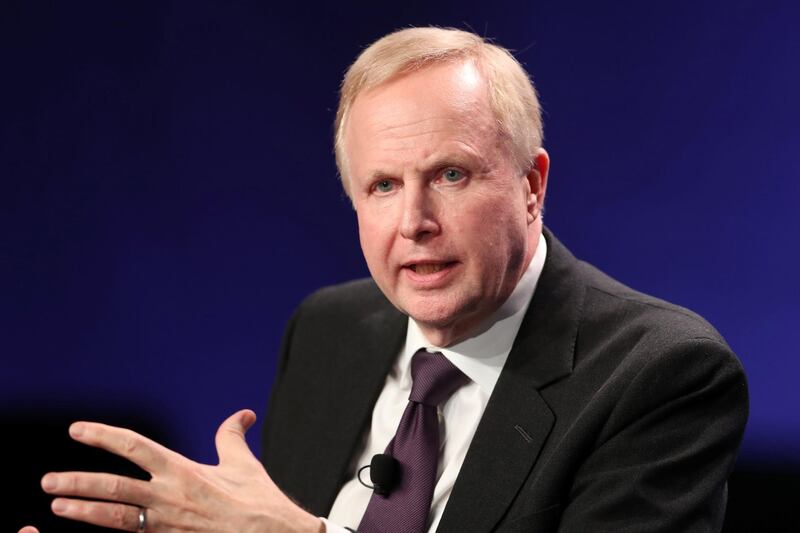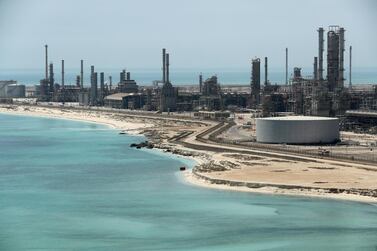BP boosted cash flow and beat the target on profit estimates in the first quarter as rising oil and gas production offset the effect of lower prices.
London-based BP said adjusted net income was $2.36 billion in the first quarter, exceeding forecasts of $2.3 bn, according to a company-provided survey of analysts.
That was down from $2.6bn a year earlier and from $3.5bn in the fourth quarter of 2018.
The company took operational control of BHP Group oil assets scattered across the US during the first quarter, following a $10.5bn acquisition.
Cash flow from operations, a key measure of whether that deal is paying off, rose by $600 million from a year earlier to $5.9bn,including movements in working capital and excluding payments for the Gulf of Mexico oil spill. Total oil and gas output increased 2.4 per cent to 3.822 million barrels of oil equivalent a day.
"BP’s performance this quarter demonstrates the strength of our strategy," chief executive Bob Dudley said in the company's 2019 first-quarter earnings report.
"With solid upstream and downstream delivery and strong trading results, we produced resilient earnings and cash flow through a volatile period that began with weak market conditions and included significant turnarounds.
"Moving through the year, we will keep our focus on disciplined growth, with efficient project execution and safe and reliable operations," he said.
BP started up gas projects in Trinidad and Tobago and Egypt, and has a stake in the Constellation oil project in the Gulf of Mexico operated by Anadarko Petroleum, which began operating in February. By 2021, the company expects new projects to lift output by 900,000 barrels a day, potentially closing the gap with its larger rivals.
The UK company managed to avoid the refining trap that snagged Exxon. Downstream earnings were $1.73bn for the quarter, down slightly from $1.83bn a year earlier. Despite lower refining margins, results were buoyed by a strong performance from supply and trading - a giant oil and gas trading house that sits inside the oil major. Exxon doesn’t have a comparable business.
“With operational performance and project delivery looking strong, we expect a solid second quarter for BP,” said Bloomberg Intelligence analysts Will Hares.
BP is paying for the BHP assets in cash installments, and still has liabilities to cover associated with the 2010 Deepwater Horizon catastrophe. Those combined outflows pushedthe company’s gearing - the ratio of net debt to total debt plus equity - to 30.4 per cent, the highest level in at least a decade.
BP repurchased 6 million ordinary shares at a cost of $50 million, including fees and stamp duty, during the first quarter of 2019.
"Our share buyback programme is expected to be weighted to the second half of 2019 and to fully offset the impact of scrip dilution since the third quarter 2017 by the end of 2019," BP said.
The energy giant announced an interim dividend of 10.25 cents per ordinary share, which is expected to be paid on June 21 to ordinary shareholders.
The company's performance brightens a mixed picture for Big Oil earnings. While the industry has moved beyond the worst downturn in a generation it's still enduring volatile markets,with a sharp slump in crude prices late last year followed by asteep rebound in the first few months of 2019.
French giant Total was able to keep increasing cash flow thanks to rising production from new projects and Chevron beat expectations by cutting costs, but Exxon Mobil posted a first quarter "shocker" as its refineries lost money.







